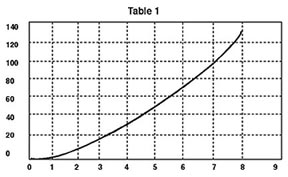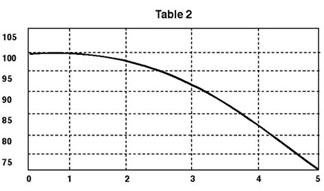
Why do pump motors fail?
In 1987, publishers of the Electric Motor Manual studied 9000 motor failures and categorized the failures into 7 types; overload, single-phasing, old age, bearing failures, rotor failures, contaminants, and misc. The interesting thing is all of these failed motors were protected by fuses or circuit breakers for shorts and by overload heaters for overload, unbalance, and single-phase faults. So, why didn't the fuses and overloads in the three-phase pump control panel protect the motors?

The primary answer is response time.
For instance, a typical overload relay can take up to 20 seconds to respond to a single-phase condition. Imagine the heat build-up in the one remaining winding in a single-phase motor having to carry the entire load by itself. If it doesn't fail immediately, its life will have been substantially shortened by damage to winding insulation caused by being severely overheated. A conventional overload relay responds slowly to single-phase conditions because it is reacting to the effect of the single-phase condition, which is heat, not to occurrence of the single-phase condition.Operating a three-phase motor on unbalanced power can also cause serious overheating that will dramatically shorten its life. Tables 1 and 2 show temperature rise resulting from unbalanced power and the recommended horsepower derating curve.
Solid state phase monitors, on the other hand, detect faults like single-phasing, voltage unbalance, high and low voltage electronically, and can be programmed to respond immediately. A single-phase condition occurs, and in less than a second, the motor is turned off. Or if the single-phase condition occurs while the motor is off, the phase monitor will prevent the motor from coming on until the condition is corrected. The same holds true for reverse-phase conditions and severe voltage unbalance.
Three-phase protection devices can be divided into three categories: phase monitors (also called voltage monitors), current monitors, and multifunction devices.
Voltage monitors not only turn pumps off when voltage is outside preset safe parameters, they prevent them from starting if voltage conditions are not right In this regard, they offer better protection than current monitors which require the pump run for a few seconds before the current responds enough to trip out the motor. In a single-phase or severe unbalance condition, this might damage the motor. In a reverse-phase condition, the pump could be damaged by running for a few seconds.
Voltage monitors are relatively inexpensive, and provide protection for single-phase, reverse-phase, and phase unbalance faults, plus over and under voltage. Some also include a power-up delay timer, which is necessary in a line shaft turbine application to prevent the pump from restarting after a power interruption while the turbine is back spinning.
Their drawback is they ignore well-related problems because they don't monitor current. Their best use in a pump application is to supplement a current monitor that does not have built-in voltage protection. I always recommend voltage and current monitors, or a combination unit, for any motor larger than 15 HP.
Current monitors compare current going to the pump with preset, safe levels, and turn the pump on or off accordingly. They read current indirectly using a device called a current transformer (CT). A CT is a coil, about the size of a donut, which installs over a conductor, producing a secondary current proportional to current flowing through the conductor. This secondary current is read by the current monitor. The CTs can be built into the current monitor or external to it.
Most current monitors use three CTs, one for each phase, and look for over current, under current, current unbalance, single-phase, and reverse-phase faults. Some are factory preset, and others are field calibratable. If you are not relying on the current monitor to detect unbalance, single- and reverse-phase faults because they are unlikely to occur in your area, or because you have a voltage monitor to perform these functions, a single-coil current monitor can be used to monitor over current and under current, saving some money.
Multifunction devices combine several functions in one package.
For instance, Coyote's three-phase units are available with a built-in contactor that handles up to 40 HP at 460 volts. Symcom's Model 777 unit combines a voltage monitor, current monitor, and ground fault monitor.
Franklin's Subtrol Plus monitors current and motor temperature, and will shut down the motor if current or motor temperature exceed safe levels. Subtrol Plus requires use of special temperature sensors built into the motor, which are standard in 40 HP and larger Franklin motors, and optional in smaller 6 and 8" motors. The temperature sensors are available special order in Franklin high thrust three-phase motors. Certain restrictions apply. Subtrol Plus will not work with three-phase motors manufactured by other manufacturers.
A word about voltage surges and lightning strikes.
Solid state motor protection devices are like any other piece of electronic equipment, they are vulnerable to high voltage surges. Most have built in surge protection to handle small, short duration surges and spikes, but if large voltage spikes or lightning strikes are possible, addition of lightning arrestors is recommended. If your protector gets taken out by a large surge, chances are it will have saved your motor by interrupting power on its way to the grave.To summarize.
The motor protection provided as standard in a pump control panel will not always protect the motor from damage by electrical and load-related anomalies. Use of additional protection such as electronic voltage monitors, current monitors, and multifunction devices is cheap insurance to protect your pump motor and help it give you years of trouble-free service.
Next month, we will cover installation procedures and special components needed for a pumped water system using a galvanized or epoxy lined pressure tank. eTil then.
Report Abusive Comment